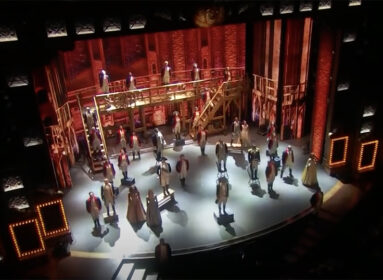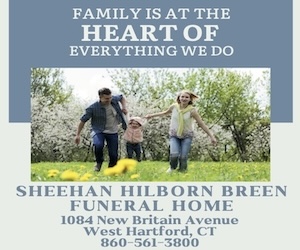Louisville professor examines Jewish life in small-town America
By Cindy Mindell
Lee Shai Weissbach is professor of history at the University of Louisville, where he has also served as chair of his department and as associate dean of the College of Arts and Sciences. He received his undergraduate training at the University of Cincinnati and earned his doctorate at Harvard University in 1975. In 1996 Professor Weissbach was awarded a National Endowment for the Humanities Fellowship and in 2006 he was selected as a Fulbright Fellow to spend a year at the University of Haifa.
He has served both on the executive committee of the American Jewish Historical Society’s Academic Council and on the board of trustees of the Southern Jewish Historical Society.
Weissbach’s works in the field of Jewish history include many articles in academic journals including American Jewish History, the Journal of American Ethnic History, The American Jewish Archives Journal, Shofar, and Southern Jewish History. This year, Stanford University Press published Weissbach’s edited and annotated version of his grandfather’s memoir, A Jewish Life on Three Continents: The Memoir of Menachem Mendel Frieden, which he also translated from the original Hebrew.
Weissbach is author of several other books, including The Synagogues of Kentucky: Architecture and History (1995) and Building Identities: Detroit Synagogues and the Patterns of American Jewish Life (2000). He will discuss his book, Jewish Life in Small-Town America: A History (Yale University Press, 2005) at Fairfield University on Thursday, Dec. 5.
Weissbach writes that, by the 1920s, there were around 500 small U.S. cities and towns with Jewish populations of 100 to 1,000, and that the history of these communities is an important component of the American Jewish experience. These communities were not miniature versions of big city Jewish life. They offered an alternative version and vision of Jewish America, in part drawn from small-town Jewish life in central Europe, and in part based on American traditions of individuality, entrepreneurship, and social responsibility.
In his review of the work, Brandeis scholar Jonathan Sarna, author of American Judaism, wrote, “Unquestionably the most thoroughly researched of all books on small Jewish communities, this volume will stand for many years as the definitive work on the subject.”
Weissbach spoke with the Ledger about American Jewish life far from the bright lights of the big city.
Q: First, tell us about your own Jewish family life as you grew up.
A: I was born in Israel a year before the state was established, but my family moved to the U.S. when I was five and I grew up in Cincinnati. There, my family was very involved in the Jewish community. My mother was a Hebrew teacher and later the principal of an afternoon community Hebrew school. My father was the long-time treasurer of the local Hebrew-speaking club. My main Jewish involvement, other than the usual Hebrew school and Sunday school education, was with the Labor Zionist youth group, Habonim. I was very active in Habonim programs in the city and spent every summer from 1962 to 1970 at Habonim camp, first as a camper and then as a counselor.
After graduating from the University of Cincinnati, I moved with my wife Sharon – we were a Habonim couple – to Massachusetts for graduate school. I earned my PhD at Harvard and my wife earned hers at Boston College. While in graduate school, I taught Sunday school and eventually became education director at a Reform temple. After a few years of part-time college teaching in Massachusetts, I moved to Louisville for a tenure-track job in the history department at the University of Louisville, where I have been for 36 years. My wife and I have two children and two grandchildren.
Q: How did you become interested in history in general and small-town American Jewish life, in particular?
A: I became interested in history generally because I have wide-ranging interests and I came to realize that, because everything has a history, I could engage with just about any topic that attracted my attention, through the study of history. As a historian, I have always been interested in the lives of common people, rather than elites, and all the research projects I have undertaken have focused on the experience of common people, especially during the 19th century and the early part of the 20th. Early in my career, most of my work was in French history. My first book was on the problem of child labor in 19th century France, and I also wrote about Jewish apprenticeship programs in France. In the 1980s, when I was looking for a new research project – historians are always on the lookout for topics that have not been investigated – I realized that there had never been any systematic studies of smaller Jewish communities in either France or America. As a result, I published a few articles dealing with small-town Jews in France, but my interest in small-town Jews in America became a full blown book project, which resulted, eventually, in the publication of Jewish Life in Small-Town America.
Q: Why did you decide that this story was an important one to tell?
A: I decided that it was important to tell the story of Jewish life in small-town America because this is an aspect of the story of American Jewry that is generally overlooked, despite the fact that, historically, there have been many more small Jewish communities in the U.S. than large ones. When people think of American Jewish communities, they generally think of them in connection with great cities such as Boston, Philadelphia, Chicago, and, of course, New York, or perhaps in connection with what might be called midsize cities such as Baltimore, or Indianapolis, or Denver, or Cleveland, but most are unaware of a Jewish presence in places such as Macon, Ga. or Kalamazoo, Mich., or Owensboro, Ky., or Zanesville, Ohio. I saw it as worthwhile to preserve the history of small-town communities in places such as these.
Q: How did these communities originate and why did they develop where they did?
A: As I will explain in my talk, smaller Jewish communities generally developed in small-towns where Jews saw economic opportunities. As new towns were established across America in the 19th and early 20th centuries, they attracted Jews who were looking for ways to make a living and perhaps to establish themselves in their own businesses. Some Jews discovered small-towns more or less by chance, passing through them as peddlers, for instance, and some were looking for rustic environments away from the big city, but many Jews came to small-towns because they had relatives or acquaintances who had discovered these towns earlier.
Q: From your research, what are some common components among these small Jewish communities: observance, community infrastructure and institutions, retention and attrition, etc.?
A: In some ways, the patterns of Jewish life found in big cities were replicated in small-towns, but there were also some striking differences between big-city Jewish life and small-town Jewish life. For example, while Jewish communities in large or even midsize cities usually had a substantial working-class component, Jewish communities in small-towns generally lacked a Jewish working class. Also, while larger Jewish communities generally had multiple congregations with which people could affiliate, in small-towns there was generally only one synagogue or temple, or occasionally two. This meant that in order to support congregational activity, small-town Jews had to compromise on matters of ritual and practice much more often than big city Jews. I will talk more about these kinds of differences in my lecture at Fairfield.
Q: Do any of these small communities exist today?
A: There are small-town Jewish communities today, but many of the ones that existed in the past have disappeared. Some have been absorbed into the greater metropolitan areas of large cities and others have died out. Moreover, those small-town communities that exist today are quite different in nature from those of the past, thanks in part to features of modern life such as interstate highways and the Internet, and thanks in part to the decline of the kind of Main Street stores that once sustained so many small-town Jewish families.
Q: How did you spend your Fulbright year at the University of Haifa?
A: When I was in Israel in 2006-07, I worked with a small number of graduate students who were working on history degrees, but my main activity was beginning work on the translation, editing, and annotation of my grandfather’s memoir. Needless to say, doing that in a Hebrew language environment was a great advantage. Of course, I also took advantage of my year in Haifa to spend time with family, with friends, and with colleagues, and to do some touring, including side trips to Hungary and to Jordan.
I have always maintained some abilities in the Hebrew language, thanks to the home in which I grew up, thanks to frequent visits to Israel, where I still have a lot of family, and thanks to my own interest in the language. My Hebrew is not nearly as fluent as my English, but as I considered the project of translating my grandfather’s memoir, I became convinced that my Hebrew was good enough. Moreover, it is a general principle in the work of translation that it is more important to be highly proficient in the target language than in the original language.
Bennett Center Lecture: “The Jewish History of small-town America” with Prof. Lee Shai Weissbach: Thursday, Dec. 5, 7:30 p.m., Fairfield University, Dolan School of Business Dining Room, 1073 North Benson Road, Fairfield. For complimentary reservations call (203) 254-4000, ext. 2066.
Email cindym@jewishledger.com.








 Southern New England Jewish Ledger
Southern New England Jewish Ledger









